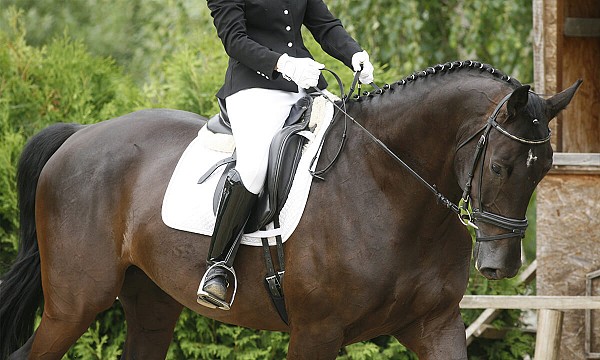Each dressage test is split into several segments for which the horse and rider are scored out of 10 points for each segment according to the follow scale:
|
10 |
Excellent |
|
9 |
Very Good |
|
8 |
Good |
|
7 |
Fairly Good |
|
6 |
Satisfactory |
|
5 |
Sufficient |
|
4 |
Insufficient |
|
3 |
Fairly Bad |
|
2 |
Bad |
|
1 |
Very Bad |
|
0 |
Not Executed |
Some segments of the dressage test may carry double marks and so are marked out of 10 and then the score for that segment is doubled. In addition to scoring the horse and rider for each segment of the dressage test, overall marks are also awarded for impulsion, regularity of paces and freedom of movement, responsiveness and willingness, balance and correct performance of the movements, rider position and correctness and effectiveness of aids. These marks are known as collective marks and carry double marks so the mark out of 10 scored for each is then doubled.
At the end of each dressage test the marks for each segment and the collective marks are added up to give a total score for the dressage test and this score is then converted to a percentage of the total marks achievable.
In the event of two horses having obtained the same total score and percentage for the dressage test, if one horse and rider has higher collective marks than they other, the rider with the highest collective marks will be placed above the horse and rider with lower collective marks.
Scoring a perfect 10 in dressage, as in any sport where competitors are judged on a scoring system, is hard to achieve and scoring 8 or 9 for any segment are considered to be particularly high. Overall scores of 70% or over for a dressage test are considered very good, scores of 60-70% are considered good and if a horse and rider are consistently scoring 60%+ at any level of dressage competition this indicates that horse and rider are ready to move onto the next level.



















